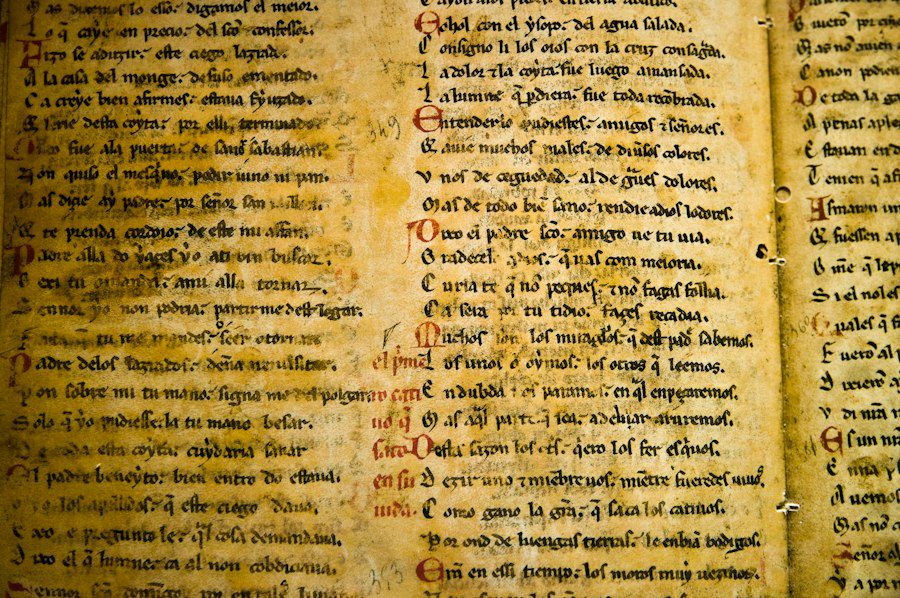The Lower Chehalis language is an indigenous language spoken by the Lower Chehalis people, who are part of the larger Chehalis Tribe. The Lower Chehalis language, also known as the Lower Chehalis dialect of the Salishan language family, is an integral part of the cultural identity and heritage of the Lower Chehalis people. It is a language that has been passed down through generations and holds deep cultural significance.
Language plays a crucial role in Indigenous communities, serving as a means of communication, cultural expression, and connection to ancestral knowledge. It is through language that stories, traditions, and values are transmitted from one generation to the next. Language is not just a tool for communication; it is a reflection of a community’s history, worldview, and identity. For the Lower Chehalis people, their language is an essential part of their cultural heritage and serves as a link to their ancestors and their traditional way of life.
Key Takeaways
- The Lower Chehalis language is culturally significant and has a rich history.
- The language has declined, but efforts are being made to revitalize it.
- Community involvement is crucial in preserving the legacy of the Lower Chehalis language.
- Language revitalization faces challenges but also presents opportunities in the modern era.
- Intergenerational transmission is important for the survival of the Lower Chehalis language.
The history of the Lower Chehalis people and their language
The Lower Chehalis people are indigenous to the Pacific Northwest region of North America, specifically in what is now Washington State. They have inhabited this region for thousands of years and have a deep connection to the land and waterways that sustain them. The Lower Chehalis people have traditionally relied on fishing, hunting, gathering, and trading for their livelihoods.
The Lower Chehalis language has been spoken by the Lower Chehalis people for countless generations. It has evolved over time as a means of communication within the community and has adapted to reflect changes in their way of life. The language was traditionally spoken in everyday interactions, storytelling, ceremonies, and other cultural practices.
The decline of the Lower Chehalis language and efforts to revitalize it
Unfortunately, like many indigenous languages around the world, the Lower Chehalis language has experienced a significant decline in recent decades. The colonization of North America by European settlers brought with it a wave of cultural assimilation and forced assimilation policies that aimed to eradicate indigenous languages and cultures.
Factors such as the establishment of residential schools, where indigenous children were forcibly removed from their families and communities and forbidden to speak their native languages, contributed to the decline of the Lower Chehalis language. Additionally, the increasing dominance of English as the primary language of education, government, and media further marginalized indigenous languages.
In response to the decline of the Lower Chehalis language, efforts have been made to revitalize and preserve it. Language classes and immersion programs have been established within the community to teach the language to younger generations. These programs aim to create a new generation of fluent speakers who can pass on the language to future generations.
The role of community involvement in preserving the legacy of Lower Chehalis language
| Metrics | Data |
|---|---|
| Number of fluent Lower Chehalis speakers | Less than 10 |
| Number of Lower Chehalis language classes offered | 2 per week |
| Number of community members involved in language preservation efforts | Over 50 |
| Number of Lower Chehalis language resources available online | Less than 5 |
| Number of Lower Chehalis language immersion programs | None |
Community involvement is crucial in preserving the legacy of the Lower Chehalis language. Language revitalization efforts are most successful when they are driven by the community itself, with community members taking an active role in teaching, learning, and promoting the language.
The Lower Chehalis community has taken a proactive approach to language revitalization, recognizing that it is their responsibility to ensure the survival of their language. Community-led initiatives have been established to promote the use of the Lower Chehalis language in everyday life, such as language immersion camps, cultural events, and intergenerational language learning programs.
By involving community members of all ages in these initiatives, the Lower Chehalis people are creating a sense of ownership and pride in their language. This not only strengthens their cultural identity but also fosters a sense of unity and connection within the community.
The challenges and opportunities of language revitalization in the modern era
Language revitalization efforts face unique challenges in the modern era. The dominance of English as the global language of communication, the increasing influence of technology, and the pressures of globalization all pose challenges to the preservation and revitalization of indigenous languages.
However, there are also opportunities that come with the modern era. Technology, for example, can be a powerful tool in language revitalization efforts. Online resources, mobile applications, and social media platforms can be used to teach and promote the Lower Chehalis language to a wider audience. These technological tools can help bridge the gap between generations and make language learning more accessible.
The importance of intergenerational transmission of the Lower Chehalis language

Intergenerational transmission of language is crucial for the survival and revitalization of indigenous languages. It is through the passing down of language from one generation to the next that cultural knowledge, values, and traditions are preserved.
The Lower Chehalis community recognizes the importance of intergenerational transmission and has implemented various strategies to promote it. Language immersion programs that bring together elders and young people have been established to create opportunities for language learning and cultural exchange. These programs provide a space for elders to share their knowledge and wisdom while allowing younger generations to learn from them.
Additionally, efforts have been made to incorporate the Lower Chehalis language into educational curricula at all levels, from preschool to university. By integrating the language into formal education systems, the community hopes to ensure that future generations have access to quality language instruction.
The cultural and linguistic diversity of the Lower Chehalis people
The Lower Chehalis people are a diverse community with a rich cultural and linguistic heritage. Within the Lower Chehalis Tribe, there are multiple dialects of the Salishan language family spoken, each with its own unique characteristics and nuances.
This linguistic diversity is celebrated and preserved within the community. Efforts have been made to document and record different dialects of the Lower Chehalis language, ensuring that they are not lost to future generations. Language preservation initiatives aim to capture the unique features of each dialect and promote their use within the community.
The impact of colonization on the Lower Chehalis language and culture
The colonization of North America has had a profound impact on the Lower Chehalis language and culture. The forced assimilation policies implemented by European settlers aimed to erase indigenous languages and cultures, replacing them with European languages and customs.
The establishment of residential schools, where indigenous children were forbidden to speak their native languages and were subjected to physical and emotional abuse, had a devastating impact on the transmission of the Lower Chehalis language. Many children who attended these schools were unable to pass on their language to future generations, resulting in a significant decline in fluent speakers.
The ongoing effects of colonization can still be felt within the Lower Chehalis community. The loss of language and cultural knowledge has created a sense of disconnection from their heritage for many community members. However, efforts to revitalize the Lower Chehalis language are helping to restore a sense of pride and cultural identity within the community.
The role of technology in preserving and promoting the Lower Chehalis language
Technology has played a significant role in preserving and promoting the Lower Chehalis language. Online resources, mobile applications, and social media platforms have made it easier for community members to access language learning materials and connect with other speakers.
The Lower Chehalis community has embraced technology as a tool for language revitalization. Online language classes and virtual immersion programs have been established to reach a wider audience and make language learning more accessible. Mobile applications have been developed to provide interactive language lessons and practice exercises.
While technology offers many benefits in language revitalization efforts, it also has its limitations. It cannot replace the importance of face-to-face interaction and community involvement in language learning. Therefore, it is essential to strike a balance between utilizing technology and maintaining traditional teaching methods.
The future of the Lower Chehalis language and its place in the broader cultural landscape
The future of the Lower Chehalis language is promising, thanks to the dedicated efforts of the Lower Chehalis community and their commitment to language revitalization. The establishment of language classes, immersion programs, and community-led initiatives has created a strong foundation for the preservation and promotion of the language.
The revitalization of the Lower Chehalis language not only benefits the community but also contributes to the broader cultural landscape. Indigenous languages are an integral part of the world’s linguistic diversity and cultural heritage. By preserving and revitalizing the Lower Chehalis language, the community is contributing to the preservation of indigenous languages worldwide.
The ongoing efforts to revitalize the Lower Chehalis language have the potential to create a lasting impact on the community and future generations. By reclaiming their language, the Lower Chehalis people are reclaiming their cultural identity and strengthening their connection to their ancestors and traditional way of life.
If you’re interested in exploring another fascinating indigenous language, check out this article on the Lower Chehalis Language. The Lower Chehalis Language is spoken by the Chehalis people of Washington State, USA. It is a critically endangered language, with only a few fluent speakers remaining. This article delves into the origins and unique features of the Lower Chehalis Language, shedding light on its rich cultural heritage and the efforts being made to preserve it. Read more
FAQs
What is Lower Chehalis Language?
Lower Chehalis Language is a Native American language spoken by the Chehalis people in the Pacific Northwest region of the United States.
How many people speak Lower Chehalis Language?
As of 2021, there are no fluent speakers of Lower Chehalis Language. However, there are efforts to revitalize the language and teach it to new generations.
What is the history of Lower Chehalis Language?
Lower Chehalis Language has been spoken for thousands of years by the Chehalis people. However, due to colonization and forced assimilation, the language has been in decline since the 19th century.
What is being done to preserve Lower Chehalis Language?
Efforts are being made to preserve Lower Chehalis Language through language revitalization programs, language classes, and the creation of language learning materials.
What is the current status of Lower Chehalis Language?
Lower Chehalis Language is considered to be critically endangered, with no fluent speakers remaining. However, there are ongoing efforts to revitalize the language and preserve it for future generations.
